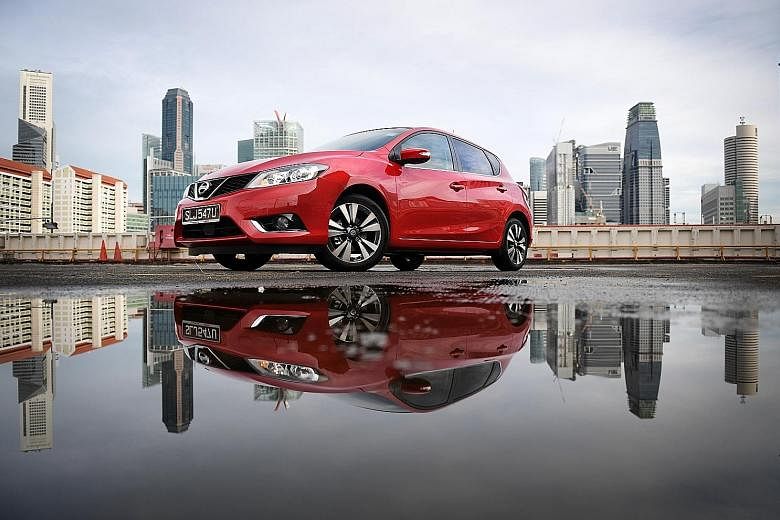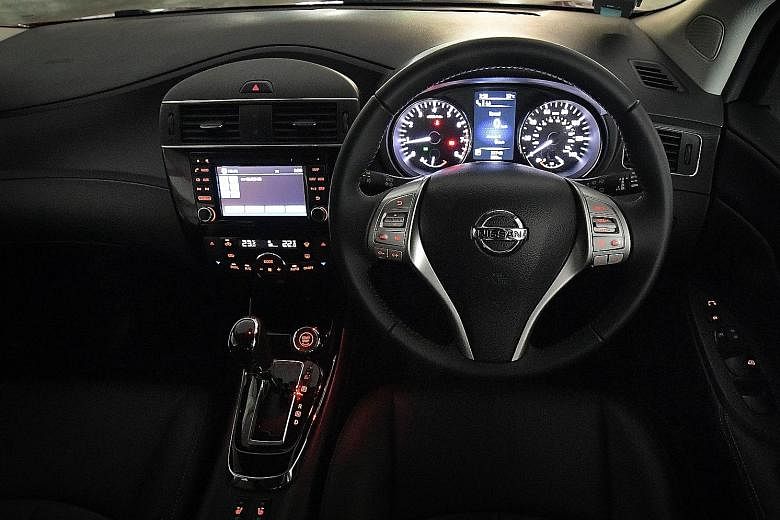The last time The Straits Times ran a review of the Nissan Pulsar was back in the 1980s. The car was a rudimentary runabout and largely forgettable, which explains its long absence since.
The new Pulsar changes all that. It is a punchy compact, thanks to a 1.2-litre turbo heart first seen in the popular Nissan Qashqai.
And just as the 1.2-litre turbo helped the Qashqai hog the sales chart, it is likely to do the same for the Pulsar.
The test car is exceedingly well equipped, with features you would normally see only in bigger, premium models.
These include lane-departure warning, blind-spot monitoring, collision warning and a parking assistance system with reverse camera as well as a 360-degree "bird's-eye" camera, whose quality is as good as those found in luxury models. It is a boon to those who find parking impossibly difficult.
Its suite of electronic warnings - which are mostly optional - can be useful, but there have been occasions when they beep with no apparent reason.
-
SPECS / NISSAN PULSAR
-
Price: From $101, 800 with COE
Engine: 1,197cc 16-valve inline-4 turbocharged
Transmission: Continuously variable transmission with manual override
Power: 115bhp at 5,200rpm
Torque: 165Nm at 1,750rpm
0-100kmh: 11 seconds (estimated)
Top speed: 180kmh (estimated)
Fuel consumption: 5.1 litres/100km
Agent: Tan Chong Motor
Dual-zone climate control, a multi-function steering wheel, keyless access and ignition, and cruise control are some of the other features found in the Pulsar.
What makes the Pulsar peachy is, however, not a gizmo. It is its engine.
The energetic unit endows the ordinary-looking family car with extraordinary driveability. Squeeze its throttle and it takes off like a hot hatch.
It sustains its uncommon verve easily, with nary a complaint from its drivetrain. Before you know it, its digital speedometer is flashing three digits.
The car is made in Spain and targetted at the European audience. Its sportiness sees to that, along with its incredible roadholding, high-speed stability and left-mounted signal stalk.
You would not describe it as willowy, even if the car betrays some body roll without much provocation.
Still, it is actually more fun to drive than Honda's 1.5-litre turbo Civic simply because of its irrepressible engine and well-matched transmission.
The Civic is a bigger car, but the Pulsar, being a five-door, offers plenty of versatility with its split foldable rear seats. Flip them down, push the front passenger seat forward and you will be able to transport a bicycle to your favourite cycling venue. Otherwise, the car seats five reasonably well.
On most fronts, it is a winner - sporty, spacious and suitably equipped (LED headlights and reverse camera are standard fare). At the same time, its small capacity engine translates to low running costs insofar as fuel and road tax are concerned.
This current generation was launched in Europe in 2014 and it was previewed at last year's Singapore Motorshow. Finally, it will be officially launched at the Singapore Motorshow 2017 next week.
It has certainly taken the Pulsar a long time to make a comeback, but what a comeback it will be.



